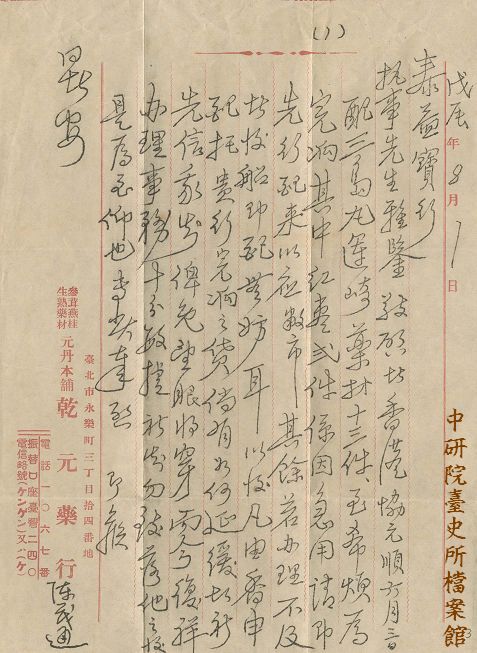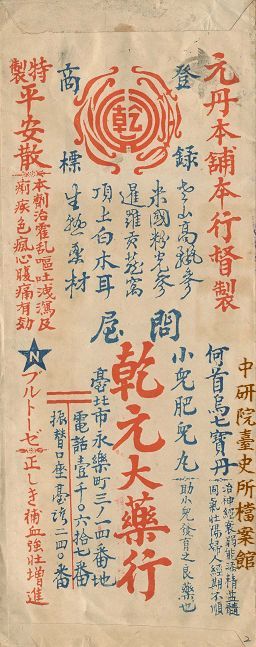|
Unlike Lin-fu-zhen Store, which is a family-owned business, the managers of Qian-yuan Pharmacy had changed many times in the past one hundred years. To this day, there is still no definite conclusion on which year was Qian-yuan Pharmacy established, some believe it was established in 1875, others believe it was 1896. According to an article published on January 21, 1929, No.10329, Section 8, “Announcement of the 30th anniversary of Qian-yuan Pharmacy” in Taiwan Daily News, the manager Chen Mao-tong had an address as follows: Looking back at the history of our store, it has been 30 years since Mr. Chang Qing-he established Qian-yuan Pharmacy in 1896. Mr. Chang served as the manager for 20 years. I have succeeded to his position for 13 years. Hence, Qian-yuan Pharmacy has been in operation for 33 years. The founder of Qian-yuan Pharmacy was Chang Qing-he. After he passed away in 1917, Chen Mao-tong, the shareholder of Qian-yuan Pharmacy, continued operating the store. Chen was enthusiastic about public service. His acts of charity, like donating to disaster relief and supporting social enterprises, were reported by the newspapers many times. He was a renowned person in Dadaocheng and had served as the chief of Taiwanese Pharma Association and the president of Pharmacists’ Guild.   Figure 3: The letter sent form Qian-yuan Pharmacy to Tai-yi-hou on August 1, 1928. (Source: Tai-yi-hou Papers in Nagasaki, the digital archives held by the Archives of Institution of Taiwan History) |
 |



